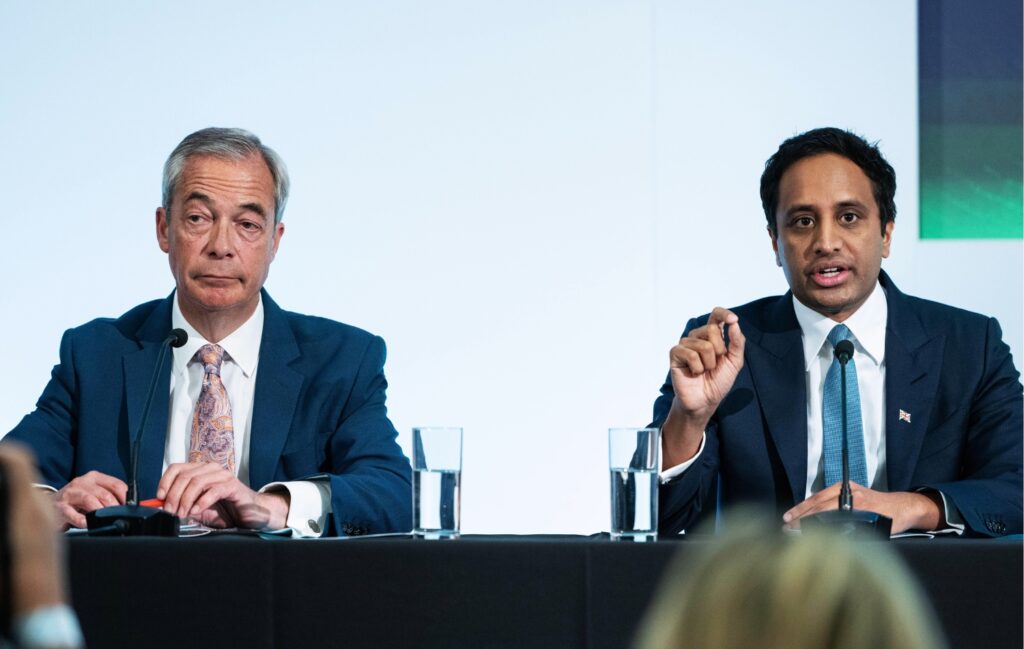“We have passed the tipping point, but I don’t believe that we have passed the point of no return.”
That was Al Gore Saturday, trying to reassure the 250 volunteers who had come to Montreal to learn to spread The Inconvenient Truth.
Saturday was the serious work day at The Climate Change-Canada’s first training session, with Al Gore leading a diverse and clearly committed group of volunteers through his Academy Award-winning presentation, slide by slide.
The goal us to add to the 2,000 trained presenters – in the U.S., Australia, India, Spain and the U.K. – who are already raising the level of public understanding on the issue of global warming.
Saturday began just as Friday had ended, with the Quebecois lining up to praise Gore the climate campaigner and Nobel laureate. Quebec Premier Jean Charest and Environment Minister Line Beauchamp fought over the microphone to introduce Gore before Montreal’s assembled media, and La Press, sponsor of the presentation Friday night, filled half the front page and four inside pages with coverage of the Gore visit and of global warming in general. (In the tradition of maintaining two solitudes, The Montreal Gazette seemed to be trying to keep Gore’s presence in town a secret. I apologize if there was a story in the Gazoo, but I couldn’t find it.)
Once the press cleared out, Gore got down to business, going through his famed presentation in detail, talking about how and why it is designed as it is, about “the architecture of the slides,” the transitions, the break points and the overall composition of the presentation.
For Gore, the slideshow was “an effort to recreate a whole series of ‘Ah Ha!’ moments for me over the last 40 years” – an attempt to share in a digestible way as much of his understanding and concern as possible in a single sitting.
For example, goes over a graph showing the sudden rise of CO2 at the end of this century (the graph he followed on a scissor-life in the movie) and he says, “For me, this is just really scary as hell.” He shows photos of the bone dry bottom of the Aral Sea (inset) – once the fourth-largest lake in the world – and says, “It really shook me up when I went to see this.” The ice shelves in Antarctica, the glaciers in British Columbia: Gore has had the big travel budget and wife Tipper has taken great photos. The “ah ha!” moments do, indeed flow.
In trying to coach people to give the presentation, he told people that when they face an audience, they will have a “time budget” and a “complexity budget.” He said, you can extend the time budget by being interesting and funny, and Gore is both. His command of the material is impressive; he has something in the order of 1,000 different slides stuffed into his MacBook and he’s forever roaring off on fascinating asides that don’t necessarily show up in every version of his own presentation.
He’s also an experienced entertainer, very comfortable on the stage. Gone is Gore the Stiff-Backed Lecturer who seemed so easy to caricature in the 2001 presidential election. Now he’s relaxed and funny, punctuating his asides with strange voices and giggling at his own jokes.
For example, for anyone who has seen the movie, Gore uses a short clip from the TV show Futurama (his daughter is one of the writers), in which unwitting sunbeams wander down to warm up planet earth and are promptly mugged by a gang of greenhouse gases. It is, Gore says, a better explanation of the science than his own, and although he tells us that he isn’t going to use up time by showing the clip again, he still winds up watching almost the whole thing, laughing all the way through like someone who has never seen it before.
Moving on to the “complexity budget,” Gore rates different slides for their level of difficulty and offers advice about which ones you might use or drop, depending on what kind of audience you’re about to face. Above all, he says, “You don’t want to make people’s heads hurt.” So “tell them what you’re going to tell them; then tell them; then tell them what you told them. Classic formula.”
Gore also spoke about the inevitable quibbles that presenters will have to keep in mind, “attacks on reason by sceptics who are getting paid money from large carbon polluters.” But he kept coming back to the central point of his own work – that climate change is an “inconvenient truth” that many people just don’t want to accept.
Many people, he said, are heavily invested in “sub-prime carbon projects” and, one way or the other, those investments are doomed. Some people, Gore said, will be smart enough to move their money. Others are going to lose, and some will lose big, complaining afterward (and this with a funny voice): “How could I have known that it wasn’t okay to take the dirtiest fuels on earth and pump all that additional pollution into the atmosphere?”
His presentation went on through the entire day, punctuated every hour with a question and answer session and a break. Throughout, he was offering asides that were informative, entertaining or just indicative of his own irritability.
He said such things as:
“We (humans) are now the bull in the china shop; we are capable of doing catastrophic damage just by casually shifting our weight.”
“Have we made a value judgment that we don’t give a damn about future generations? I don’t think so, but functionally that’s the way we are behaving.”
“It turns out that pollution is waste. You have to buy resources to make pollution. Make less pollution, buy fewer resources.”
And (for the deniers in the reading audience) Gore addressed directly the question of why he sometimes seems to be overplaying his hand – suggesting that the situation is worse than what mainstream scientific literature is currently reporting.
“The science,” he says, “is constantly emerging and evolving” and scientists are incredibly conservative about what they will say – insisting that they will only commit themselves to things that they can prove. “I have tried to cut through all of that and get the best of scientists go off the record and say, ‘This is what a reasonable person should conclude from all of the evidence.’ ”
That explains why, when the scientific community is pointing to models that show a likely maximum sea level increase of one meter this century, Gore feels comfortable to talk about the possibility of an increase in the two- to four-meter range. It’s not what you’ll read in Science magazine, yet, but it makes a lot more sense than the denier position that climate change just isn’t happening, or if it is, we shouldn’t bother to ruffle the economy in an attempt to do something about it.
It seems kind of risky. Many of the future presenters – especially those who plan to speak to conservative groups – say they will stick faithfully to the most conservative scientific estimates. But Gore has earned his credibility. And he’s right when he points out that the changes that we are currently witnessing are all well over the top of the worst-case predictions only three or five years ago.
Gore ended the day with a final Q & A session. In answer to a question of what would be his top policy choices, he said:
1. Implement a carbon tax and keep the effect neutral by reducing employment taxes equally.
2. Implement a global cap and trade system, while preserving the Kyoto model of tradable carbon credits.
3. Set up investment tax credits that will encouraging investment; and
4. Use information systems to ensure everyone understands the implications of their energy decisions.
Finally, he faced the question of whether he is actually optimistic about our chances of turning the situation around. Certainly, much of what he had shown and said raised doubts on that score. And that’s when he made the comment about having passed a turning point (in the mid ‘70s) but not a point of no return.
He had spoken earlier about climate systems that are non-linear – systems that could go along on a gentle curve up or down for decades or centuries and then suddenly spike or plummet.
“Our political system is also non linear,” he said. “It, too, can change quickly from one pattern to another. When people take their politicians by the collar and say, ‘Change this thing or we’ll throw you out of office,’ they (the politicians) will move.”
Hurry the day.
Subscribe to our newsletter
Stay up to date with DeSmog news and alerts







